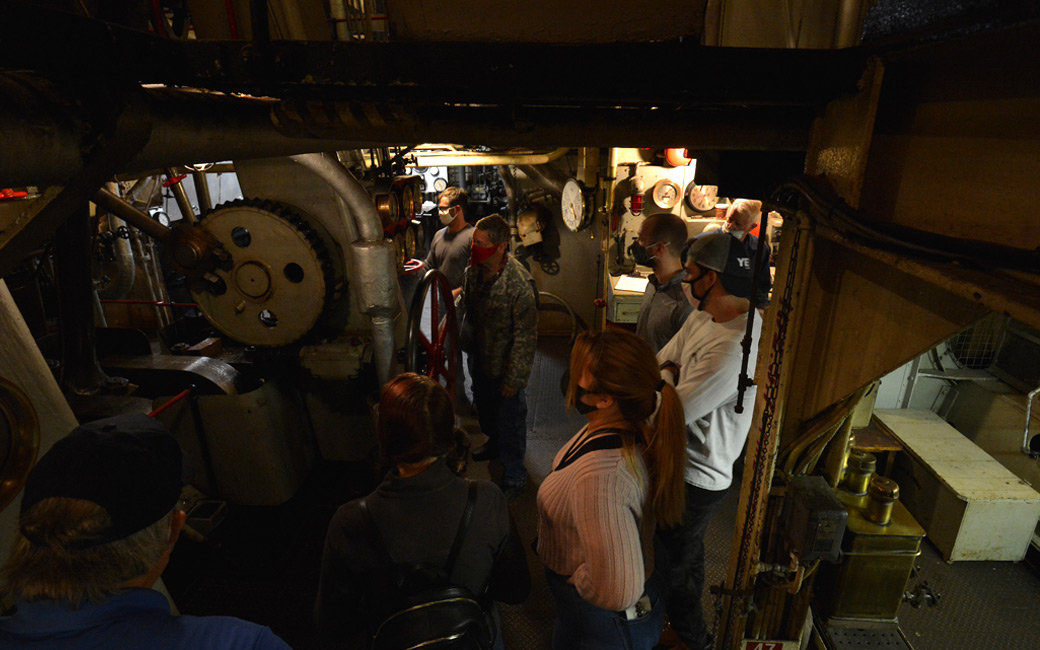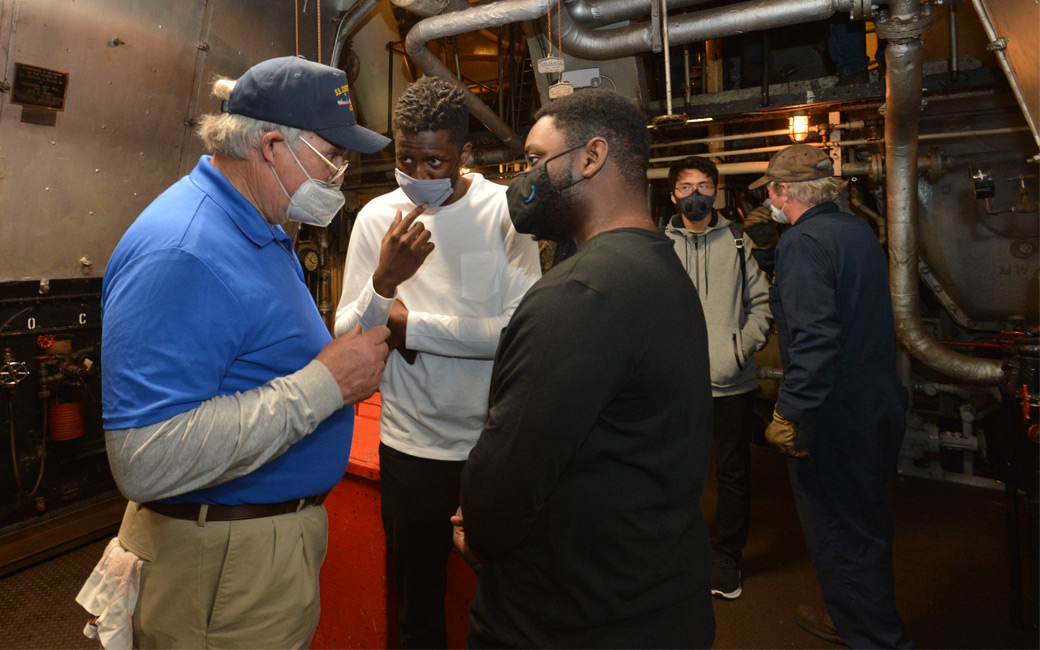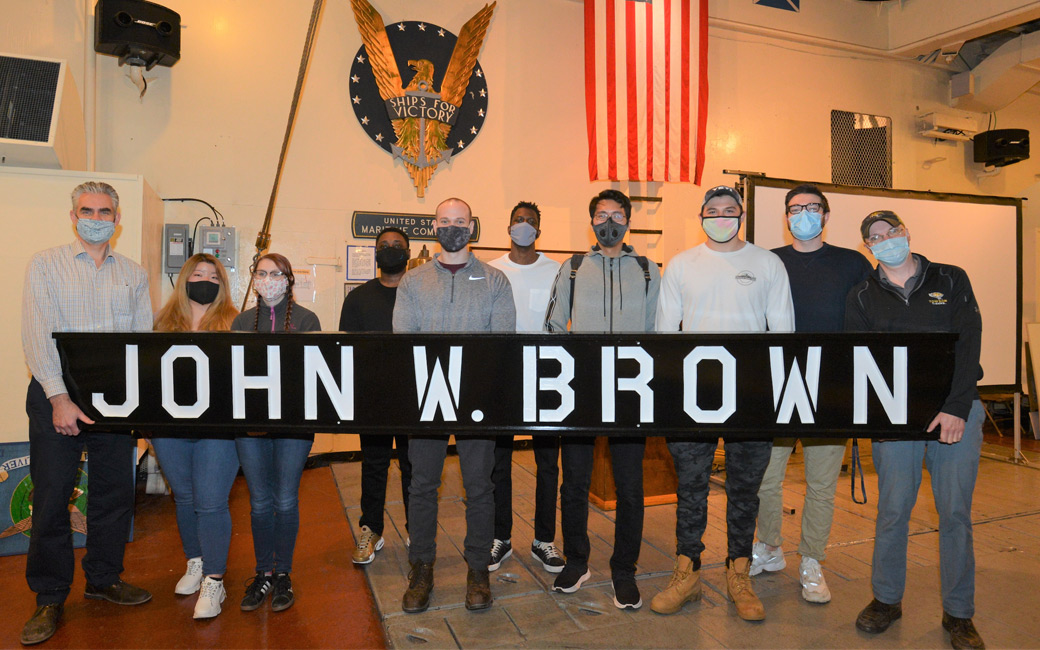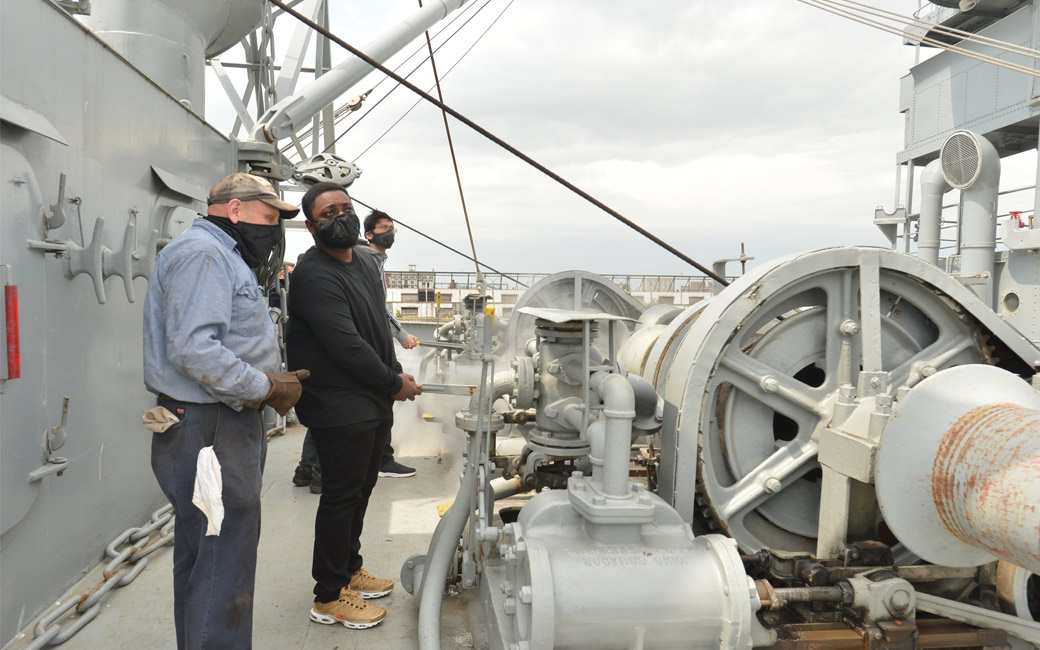
Picking up steam
TU students get hands-on physics experience
By Cody Boteler on May 27, 2021
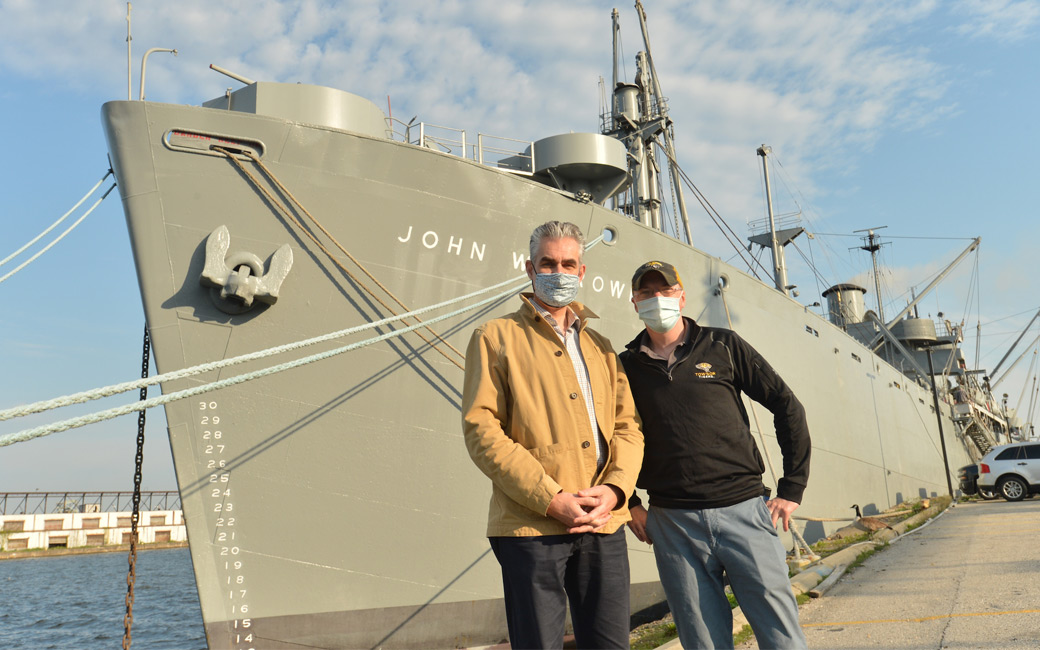
Use enough fuel, for enough hours, to heat enough water into steam then direct that steam, and you can generate enough energy to move a ship more than 400 feet long carrying tons—literally —of supplies across the ocean.
Towson University physics students in professor James Overduin’s thermodynamics class saw that firsthand onboard the S.S. John W. Brown, the last surviving WWII Liberty ship on the East Coast.
Liberty Ships were constructed in the United States during WWII, produced at an unprecedented scale in order to move cargo to Great Britain. Eighteen shipyards in the U.S. constructed 2,710 Liberty Ships between 1941-45, an average of three ships every two days.
As part of the ship’s Steam School program, Overduin, eight students and Trevor Lowing, operations manager for the Department of Physics, Astronomy & Geosciences, traveled in late April to the Baltimore harbor to experience physics outside of the classroom.
BTU and additional funding from his department supported Overduin’s trip to the floating museum.
After a brief lecture and small demonstration inside the John Brown—using a pressure cooker to generate steam—the group split in two for separate demonstrations. The first group went further below deck to see the ship’s engine, while the second group went on deck for a different demonstration.
The three-story engine, powered by steam generated by burning oil in a boiler, cranks the engine, which turns the rear propellor and sends the ship across the Atlantic Ocean, Lowing explains.
From the engine to the galley and everything in between, the John Brown is maintained by a group of dedicated volunteers. Although the ship is docked, it remains operational and certified to operate by the U.S. Coast Guard.
Overduin and Lowing know the value in showing students the practical applications of physics. Two years ago, the pair took students to a steam train.
"These things make the course come to life. It makes it believable,” Lowing says. “Otherwise, it’s just a bunch of equations on the board."
On the ship’s deck, students turned steam-powered cranks to move cargo, an operation that would have happened every time the John Brown came to port.
“I thought this was a really good opportunity,” says Samuel Angle ’21, who’s studying applied physics. He says pulling the large, metal levers took some getting used to.
“What was really interesting to see was when the ship’s staff did it, and they’re flawless,” Angle says.
The field trips accomplish several goals. First, they get students out of the classroom, which is always a welcome change of pace. Second, they allow students to apply the concepts they’ve learned in lecture and classroom exercises to tangible examples, enabling hands-on learning.
And third, Overduin says, it illustrates how physics impacts the world.
The steam train transformed continental travel and shipping. Steam-powered Liberty ships helped keep Great Britain from collapsing during WWII. And now, Overduin hopes, physics will help humanity figure out the climate crisis.
“We don’t have to just wring our hands; we can use our minds. That’s my other hope. That by showing these students the tremendous accomplishments of the past, they can start to dream big about the future,” he says.
